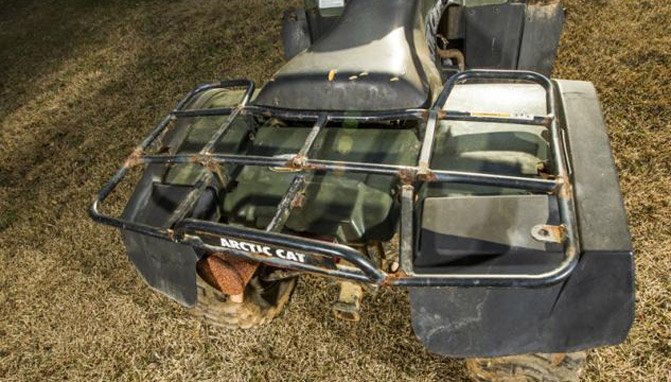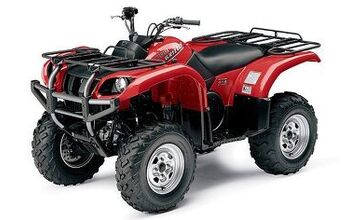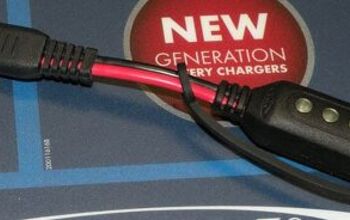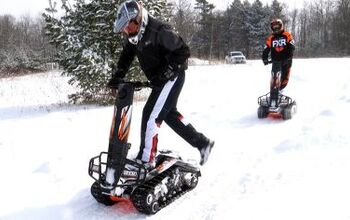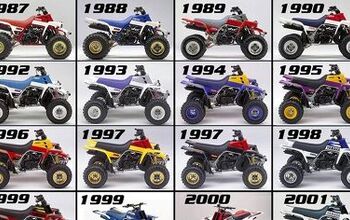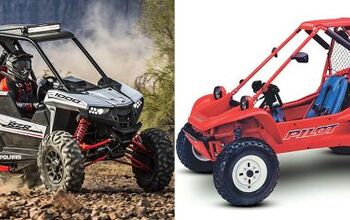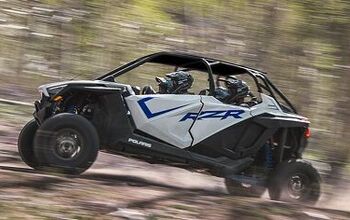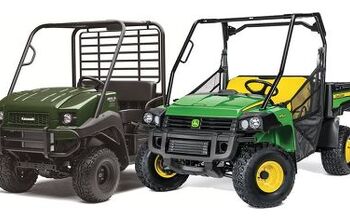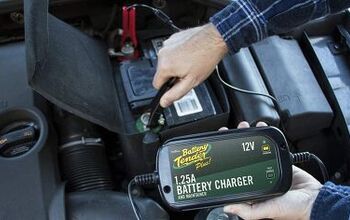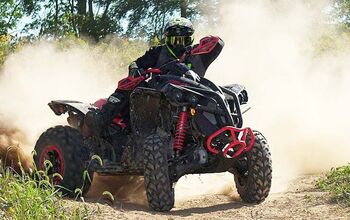How To Keep Your ATV Young
Nothing is better than riding and enjoying a brand new ATV, but since these are expensive machines we can’t simply get a new one each year. So how can you keep your ATV young?
This report describes some of the things that cause an ATV to age, and what can be done to help keep it running like new as long as possible.
Long-term disuse can lead to many forms of deterioration. For example, there is a peculiar fungus called hormoconis resinae that can grow in fuel lines or the fuel tank if they are stored with fuel in them for long periods, especially in hot weather. This nasty fungus does everything from plugging the fuel filters and carburetor jets to emitting acids that destroy metal parts. Microscopic organisms like this were responsible for the pipeline damage that temporary shut down the Alaskan North Slope oil fields in 2006. If you ever discover a black or green sludge-like substance that has plugged your fuel filter or fuel lines—it’s probably this fungus or one of its evil cousins such as anaerobic bacteria and it needs to be treated with a biocide.
Another fuel problem relating to long-term disuse is that resins in unused fuel begin to harden over time and create deposits that clog the fuel delivery system. If an ATV is going to sit unused for more than a couple of months, use a name-brand fuel stabilizer such as Sta-bil. The entire fuel system must be purged with new, mixed fuel after the stabilizer has been added. However, most fuel stabilizers do not work to inhibit fungus growth.
The battery on an ATV is prone to a problem called sulfation. Sulfation occurs when the battery sits in a partially or fully-discharged state for any length of time—even one week. When a battery is fully charged, the sulfur ions are chemically combined into the electrolyte, making sulfuric acid. As a battery discharges, sulfur ions migrate from the acid to the lead plates. This process is a natural part of the battery’s function and changes the sulfuric acid into water while converting the surface of the lead plates into lead sulfate. The lead sulfate forms deposits on the surfaces of the battery plates, gradually rendering them inoperable. Immediate and continuous replenishment from the vehicle’s charging system or an external charger will reverse the sulfation with no damage. If the battery is never returned to a full state of charge, the sulfate hardens. Once the sulfate has hardened, it permanently reduces the functionality of the lead plates. Even worse, lead sulfate accumulates and can be compared to cholesterol plugging human heart arteries. One day, the unfortunate rider discovers that the battery can no longer turn over the engine. To prevent this, the battery must be fully charged and disconnected before being stored for one month or more. A trickle charger properly designed for the battery type and capacity should be used periodically. Heat accelerates sulfation. If storing an ATV in a hot climate, remove the battery completely and store the fully-charged battery in a cool place.
Long term storage can be hard on the ATV’s engine because of condensation that forms inside the engine with temperature variations, plus the oil in the cylinder wall can dry out, causing a dry-scrape when the ATV is started again in the spring. An easy preventative measure for both of these issues is to fog your engine before storage. Engine fogger is sprayed in through the air intake with the engine running until the engine dies. This treatment coats the internal parts with a thin, sticky protective coating that repels moisture. A savvy used ATV buyer in northern regions always asks if the engine was fogged for storage.
An overlooked problem with long-term storage is rodents or other animals making themselves at home in an ATV. Mice will move into any orifice large enough to accept them if the environment is livable. The air ducts on belt-drive CVT models are perfect for this, as I discovered one spring when a mouse nest was launched—blood, fur and all—out of the CVT exhaust on my ATV. Covering these ducts with tape will work—just be sure to remove it before you run your ATV again.
Sunlight is composed of only about 5% ultraviolet radiation (UV). Yet almost all of the damage done by sunlight is from UV energy. Sometimes the results can be humorous as one ATV company learned when an untested pigment in the body plastic turned pink on a number of test quads. UV is divided into two sub-types—UVA and UVB. UVB is more harsh than UVA and is present only in summer sunlight at most United States latitudes. Either type will wreak havoc on plastic or rubber parts. ATV manufacturers do a good job of ensuring that all of their external parts are UV-resistant, but the fact is summer sun—especially in southern regions—is still brutal on exposed plastic, paint and rubber. Cover your ATV or store it in a garage as much as possible to prevent UV damage.
One of the worst operating modes for overall ATV life is a short daily trip to the mailbox or to an ice-fishing shack in cold weather. Condensation will continually build-up in areas such as the engine and oil tank (if it has an external oil tank). Worse yet, on short trips the engine may never warm up enough to heat the moisture into a gaseous state so it can vent through the PVC valve or other venting means. The end results can be many and they are all bad. Water displacing oil in the engine will cause crankshaft or bearing damage, plus other issues. The PVC valve and other venting mechanisms can freeze up causing a vent line to pop off the engine or a crankshaft seal to rupture due to pressure build-up. Another issue caused by short trips at low RPM is that the battery is continually discharging. It takes a lot of power to start the engine in cold weather, yet the slow-speed short trips never allow the charging system to replenish the battery. A common sense solution is to take the ATV for a good half-hour spin every few weeks to really warm it up and charge the battery. Keeping the machine in a warm garage and putting a trickle charger on it occasionally also makes a big difference.
High-speed running through a mud hole can be a lot of fun, but it also generates forced streams of water similar to a pressure washer. This can force moisture past lubricant seals. Topping off the grease inside sealed bearings should be mandatory after a mud run, as is checking the various vehicle fluids. Electrical components are very prone to damage if they come in contact with water. Low-current, signal-carrying wires will quickly become unreliable if water is ingested into them because the corrosion causes a change in the wire’s resistance, making the signal unreliable or useless. An intermittent electrical problem such as this can be a nightmare to diagnose. Most ATV manufacturers have sealed connectors on their low-current electrical leads that prevent such problems from occurring 99% of the time. Sealed connectors have plastic housings with a locking tab and have rubber seals around the individual wires as well as a seal between the two mating connection points.
High-powered electrical signals are more tolerant of moisture. Therefore, many high-current connections are not truly sealed, although they may have a boot or other semi-protective covering over them. If an ATV is ridden through water frequently, all of the unsealed electrical connections such as spade and bullet terminals should be treated with a high-grade dielectric grease. A marine grade fuel stabilizer may also be required to maintain the fuel system for long-term storage. It should be noted that salt water is many times more corrosive than fresh water, so in all cases the danger of water damage is magnified. Dielectric grease, checking the seals on lubricated parts and other precautions are a must for operation in salt brine conditions.
There are great aftermarket kits available to improve an ATV’s horsepower, backshifting, traction in mud and other performance measures. But when an ATV is modified to improve performance, some of the drivetrain components may be over-stressed. For example, when aggressive mud tires are used, much more stress is put into CV joints and drive shafts because the tires require a lot more torque to get them rolling. When ‘power-chips’ or aftermarket CDIs are used to change the timing curve, the crankshaft or other engine components may be prone to early failure. The bottom line is to research how an aftermarket modification may affect the ATV’s durability, and then accept or mitigate the risks if they exist. In some cases, other aftermarket modifications may be necessary to help the quad survive the initial mods. Many good aftermarket products are available that enhance performance without diminishing durability, but due diligence is required to prevent breakdowns.
If an ATV engine or transmission has ingested water, it will displace lubricant and cause a metal-on-metal operating condition, whether it is in the crankcase, gear case or wheel hubs. This can be a mechanical death sentence. Even on new ATVs, meshing metal parts will wear until they fit to each other, which causes a build-up of metallic particles in the lubricant. The answer to these contamination problems is simple. Oil is still cheap in comparison to a new engine or gear case. Follow all recommended fluid change intervals in the owner’s manual and check all fluids for water ingestion (a milky color) after rides through deep and muddy conditions. Always change the fluid immediately if water or any other contamination is present and be sure to determine and correct the root cause. For example: Sometimes a gear case vent line may have been torn off by brush, allowing water contamination.
Being aware of what causes an ATV to deteriorate can help a smart buyer make their ATV last for many years.
More by ATV.com Staff




